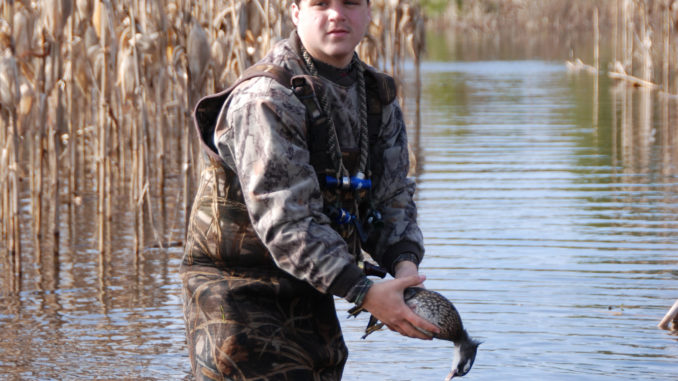
The rivers and creeks that cross the western two-thirds of North Carolina offer two things that inland waterfowl hunters love: beaver ponds and wood ducks.
Nestled deep in the hardwoods of Stanly County, a creek winds its way through the countryside, finally merging with the Yadkin River. Along its course, a smaller tributary stood bloated and still behind an impoundment not of human construction. Veteran duck hunter Mike Davis of Albemarle remained completely motionless and hidden along the banks as the pre-dawn November darkness gave way to the cries of the morning.
“Wheet-wheet-wheet,” came the high pitched call as a squadron of wood ducks winged its way along the creek before banking sharply for the confines of the hidden beaver pond. Moments later, the quiet water behind the mound of logs erupted as two wood duck drakes and a hen splashed down. Rising sharply from his spot on the bank, Davis swung as the birds, realizing they were no longer alone, bolted from the pond. Sharp reports from the gun brought down the two drakes and put Davis well on his way to a day’s limit.
“That’s why they call them wood ducks,” Davis said, displaying his limit of three brightly colored birds after making a successful passing shot on a third bird 30 minutes after taking the double. “They love hidden places and will fly through thick timber to get into just a little piece of water.”
North Carolina is richly blessed with an abundance of wood ducks. The close relative of the harlequin duck can be found from one end of the Tarheel State to the other, from the mountains to the coast. Wood ducks are, in fact, consistently the No. 1 bird in North Carolina waterfowlers’ bags, according to Joe Fuller, the migratory gamebird coordinator for the N.C. Wildlife Resources Commission. Fuller said beaver ponds are a great resource for hunters as primary habitat to find wood ducks, but they aren’t the only place to find them.
“Many hunters have success finding wood ducks along rivers, lakes and creeks — and even out in the coastal swamps,” he said. “You can also have tremendous success floating rivers in small boats and canoes jump-shooting them from (streams) than meander through the woods.”
Fuller acknowledges a positive relationship between wood ducks and the state’s ever-expanding beaver population in inland areas. Beavers create an ideal habitat for wood ducks, turning smaller, flowing streams into more expansive bodies of water. The ducks benefit in having better access to their food supplies.
“We’ve got a lot of beavers in North Carolina; the beaver population has increased greatly over the last 20 to 30 tears,” Fuller said. “Without speculating too deeply on the cause, it’s probably because of reduced pressure from trappers or maybe, like some other animal groups, the population just rolls along at a steady pace for several years and then just starts to take off. It certainly hasn’t hurt the wood ducks, because flooded bottomland created by beavers gives the ducks water around hardwood trees, and that’s a wood duck’s primary food source.”
Similar to other puddle duck species like mallards and pintails, wood ducks will eat the seeds from a variety of aquatic plants but have a definite preference for hard mast, primarily smaller acorns from pin oaks and willow oaks.
Because of the availability of these food sources, as well as adequate nesting areas across the country, three years ago, waterfowl managers nationwide agreed to an increase in the number of wood duck harvest from two to three per day during duck season.
“Just before the 2008-2009 season, the combined Atlantic, Mississippi, and Central flyways agreed to the increase,” Fuller said. “Prior to that, we’d had a lot of comments from hunters asking for an increase because the wood duck was such a popular species and a large percentage of the harvest for inland hunters. It does make the bag limit a little more flexible for those hunters, either in allowing three birds instead of just two or in the case where mallards are prevalent as well, it helps in filling out a limit of six ducks.”
Understanding seasonal wood duck migrations has provided more of a challenge to waterfowl managers than accounting for other migratory duck species. It is generally understood that wood ducks rear heavily in the northeastern United States and Canada but also show a strong tendency toward year-round residency in some states along the Atlantic flyway. North Carolina typically bands more wood ducks than most other Atlantic Flyway states, upwards of 1,000 to 1,200 annually from a variety of areas around the state, and the reports are interesting.
“We get North Carolina bands back from South Carolina, Georgia, and Florida,” Fuller said, “but we’re just as likely to get Coastal region bands back from the Piedmont or the Mountains. It’s also not unusual for us to get 2-year-old bands back from areas like Virginia or somewhere north of here like Maryland or Vermont.”
Wood ducks females exhibit what biologists refer to as a “philopatric response” when breeding and rearing young. This means they show a preference to remaining in or returning to the area where they themselves were reared, similar to a spawning salmon. Because males take the female’s lead in migrational patterns, it’s not uncommon to have a hometown boy take up with a Yankee girl retreating from a winter snowstorm up north, then follow her home the next spring.
Regardless of whether they’re local birds or migrants, Davis hunts them the same way.
“People say that wood ducks won’t decoy or respond to calls like other ducks,” he said. “I believe that’s true to a certain extent. You won’t see a flock of wood ducks circle four times while you keep calling them in closer and closer ’til finally they pitch in and land over your decoys. I think wood ducks know where they’re going from the moment they leave the roost. If you aren’t in that spot, or at least real close, you won’t kill them.”
Davis said scouting is an integral component to hunting wood ducks, and he’s not a fan of hunting one location more than once or twice a week. He likes to have a handful of areas that he’ll visit a few days before a hunt to see if birds are present.
“Once you find a pocket they like, they’ll come back to it so long as there’s food, a place to rest and where they can stay hidden. Wood ducks are not open water ducks; they love seclusion,” he said.
Once he’s decided on a location, Davis will put out three or four decoys on a jerk cord. He owns a half-dozen decoys he’s had for years, but rarely do all of them see action at once.
“They will light right beside you or within just a few yards if you’re in a tight space,” he said. “He’s not a major decoying duck, but if he’s see motion and he decides to come in, he’ll come in.”
Because of the tight quarters in most of his wood duck holes, Davis tends to go with either an improved cylinder or modified choke, and likewise, he keeps his shot-size selection on the smaller side — more pellet in the pattern — of the spectrum.
“In a swamp, creek or beaver pond I might use an improved cylinder, where if I was hunting on the lake, I’d go with a full choke,” he said.
Another important piece of gear for Davis is a T-pole or swamp seat, available commercially from mail-order suppliers of waterfowl gear or a home-made version that uses treated 2-by-4s. The idea is to have a highly portable place to sit that will work in a marshy environment.
“I don’t use a blind, and there’s rarely a place for one,” he said. “The T-pole has a rope or strap that goes around it so you can carry it across your shoulder on your way back into the timber where they like to be. That’s why they call them wood ducks.”
Level the playing field
Landowners or land managers who have lands suitable for wetland management can learn to manipulate beaver ponds through the use of a simple beaver pond leveler, which takes advantage of the controlled water created when beavers dam an existing waterway but allows the landowner, rather then the beaver, to control the water levels.
To start, breach an existing beaver dam in a deep V-shaped pattern to allow enough room to install the leveler, which is constructed in three sections: the intake device, the flow way and the riser. The intake device is the most-sophisticated section of the leveler and is made from a 10-foot section of 8-inch diameter PVC pipe.
The intake section is perforated in several places to allow water to flow into the intake. In addition, a screen buffer, constructed of 2- by 4-inch “hogwire” fencing is rolled into a tube allowing for at least a foot of clearance between the fence and the intake pipe. The wire guard can be held in place using sections of ½-inch rebar spaced every three feet in a crisscrossed pattern to support the guard.
Next, a 20-foot section of 8-inch PVC drain pipe is used to make the flow-way section, which should be wide enough to traverse the dam at the bottom. The last section is the riser, which is constructed using a 90-degree elbow also made of PVC. The height of the riser should be equal to the level of water desired in the pond. For managers wishing to drain the entire location for the purposes of planting waterfowl-attracting foods such as Japanese millet or corn, replace the 90-degree elbow with a “T” junction to allow the pond to drain for planting.
Local ‘tax tips’
For its widespread abundance across North Carolina, many waterfowl hunters still relish the thought of commemorating a wood duck hunt by having one of the brightly colored drakes mounted.
Waterfowl are one of the most-demanding species for taxidermists to perfect. Often, it’s not the skill of the taxidermist, but the care taken of the specimen after the hunt, that will determine the quality of the mount. Here’s some “tax tips” for waterfowlers to insure they get a good jump on a good mount:
• Look the bird over for massive wounds. A taxidermist can’t replace missing hide or feathers, and not all birds are good candidates for mounting.
• Young birds or late-molting birds may still have pin feathers in their coats. Pin feathers are hard to mount and will eventually fall out, leaving gaps.
• Don’t put a bird you intend to mount on a lanyard or hold it by the neck. Carry the bird by its feet or in a pouch until the hunt is over.
• Don’t gut or field dress any bird you intend to mount.
• Never wrap a bird in newspaper. This age-old misconception dries the bird out and makes it susceptible to freezer burn. Taxidermists will wash any blood-stained feathers before mounting the skin.
• Store a bird to be mounted in a double-seal zip-lock bag and squeeze as much air out as possible.
• Get your bird to a taxidermist as quickly as possible in order to properly store the bird before mounting.
DESTINATION INFORMATION
WHERE TO HUNT — Many waterfowlers find adequate opportunities to hunt wood ducks on leased deer land or on public rivers and lakes. In addition, the state maintains a number of managed public waterfowl game lands in both the Central and Western regions as well as the Coastal region. A list of these areas is on the Public Game Lands page of the NCWRC website at
www.ncwildlife.org/hunting/documents/wf_website/wf_gen_hunt_info_pub_hunting_locations
BEST TACTICS — Although wood ducks are considered year-round residents of North Carolina, they do seasonally migrate to other areas within the state and may start to get scarce when hunting pressure and colder weather prevail. The 2011-12 waterfowl season is divided into three segments with the first segment in October. The remaining two segments are Nov. 12-Dec. 3 and Dec. 17-Jan. 28. Look for wood ducks to frequent slow-moving creeks and rivers that flow through wooded lands. Natural or beaver swamps offer prime hunting within forested land, as do any creek drainages that empty into ponds, lakes, or reservoirs. Wood ducks will respond to decoys, though not as readily as some other species. Often, it’s better to roost birds the night before the hunt in order to determine where they will be heading the next morning, then set up in that location with just a couple of decoys. Wood ducks are often the first to leave their roost at daylight and may not return to an area after the sun gets high. Try to find three or four areas where wood ducks loaf and feed and hunt them on a rotating basis, since overhunting an area is likely to cause the birds to move.
MORE INFORMATION — N.C. Wildlife Resources Commission, waterfowl and migratory game birds, 919-707-0010.
MAPS — Hunting and Fishing Maps for North Carolina Game Lands: 2010-11 Edition, www.ncwildstore.com; Delorme North Carolina Atlas & Gazetteer, 800-561-5105 www.delorme.com.

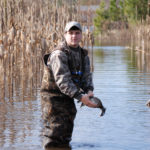
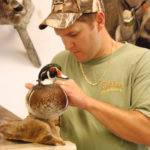
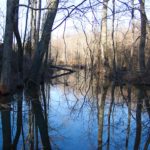
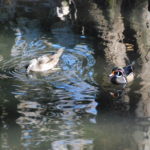
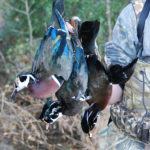
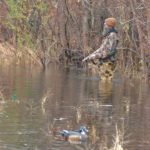
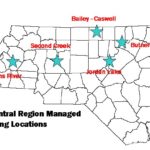



Be the first to comment